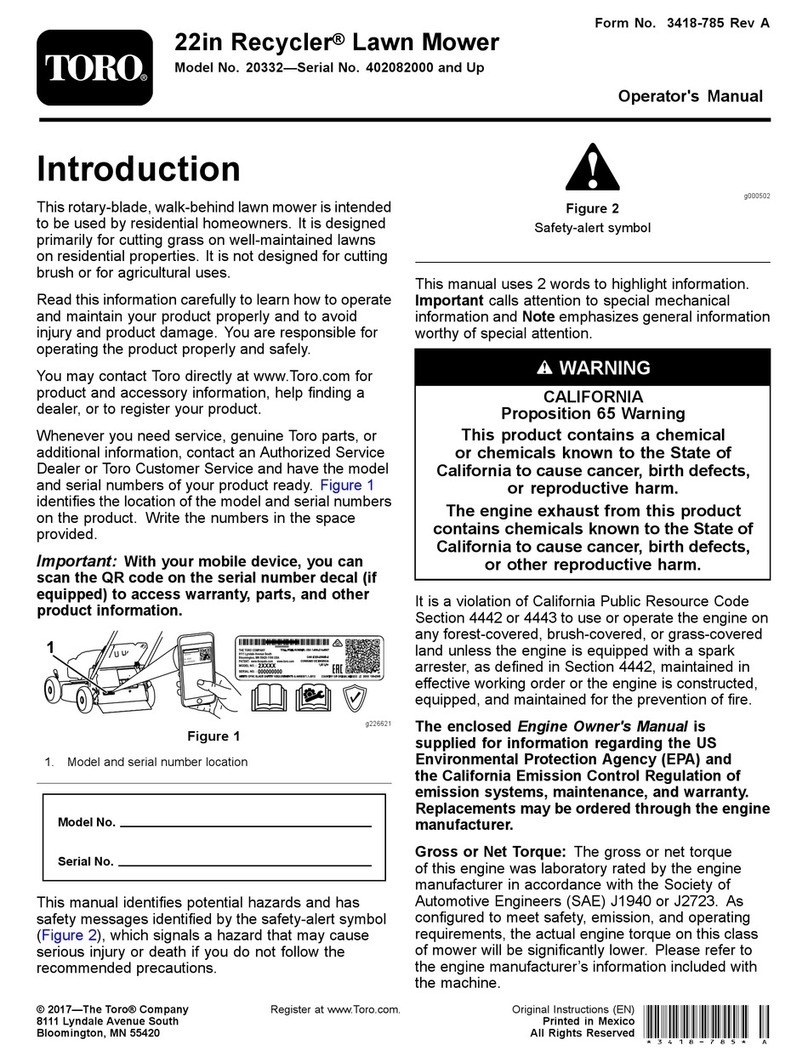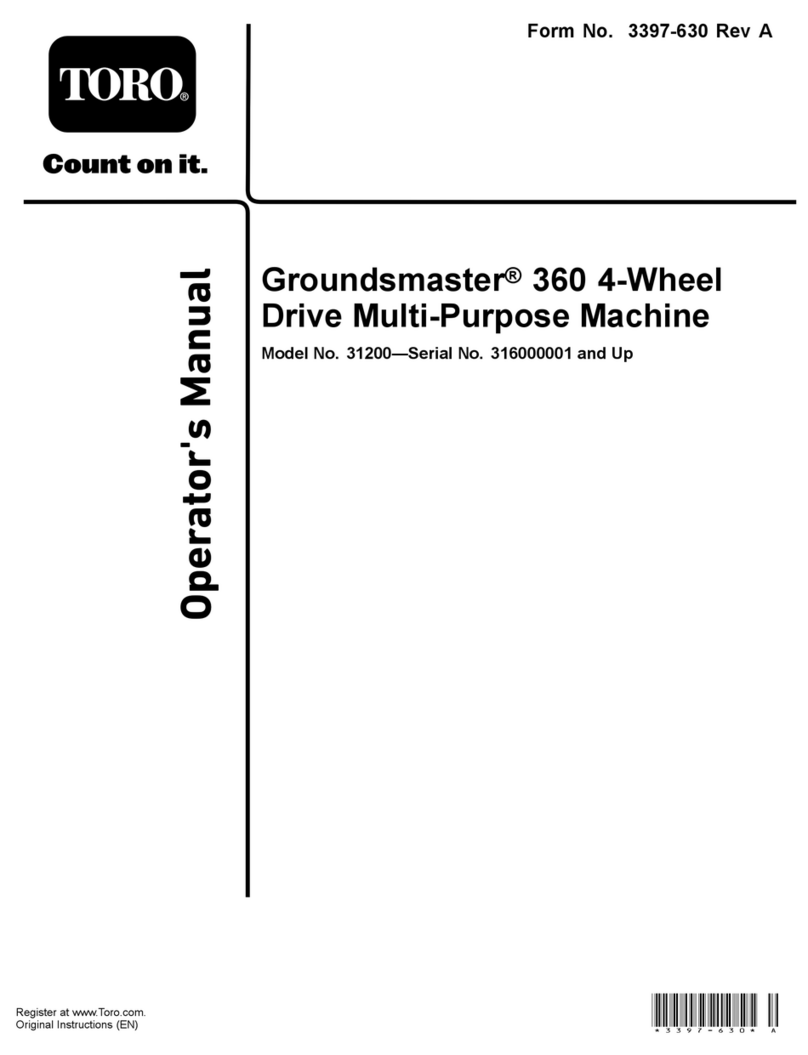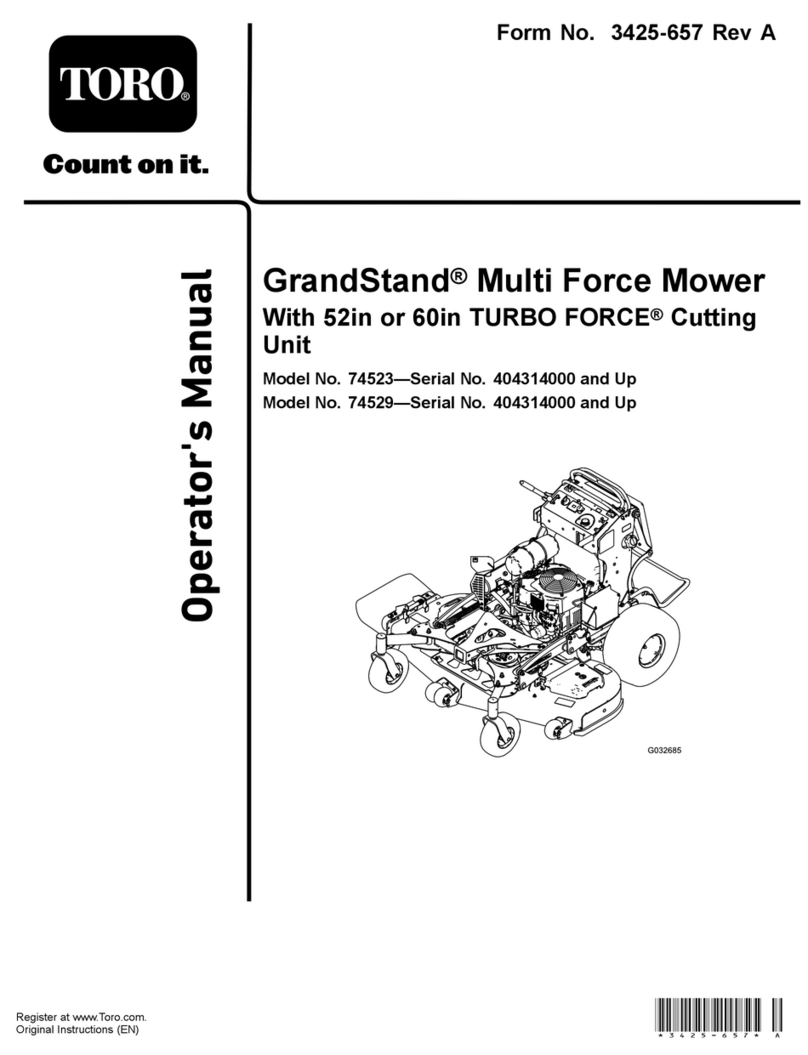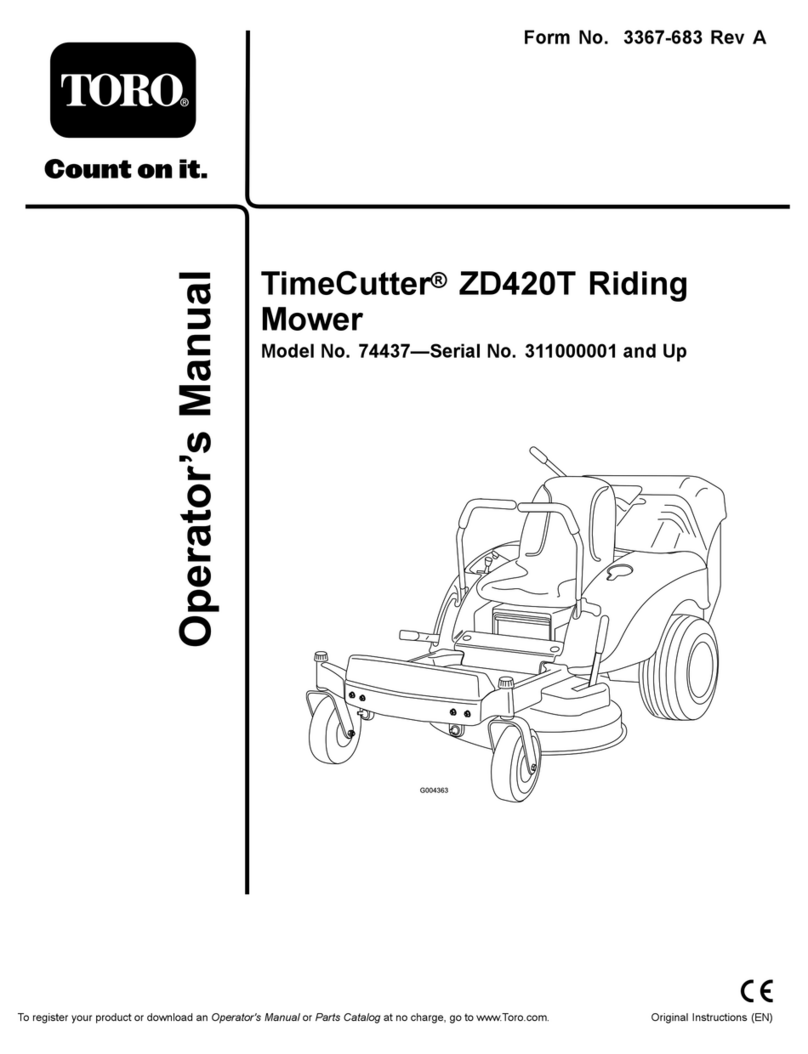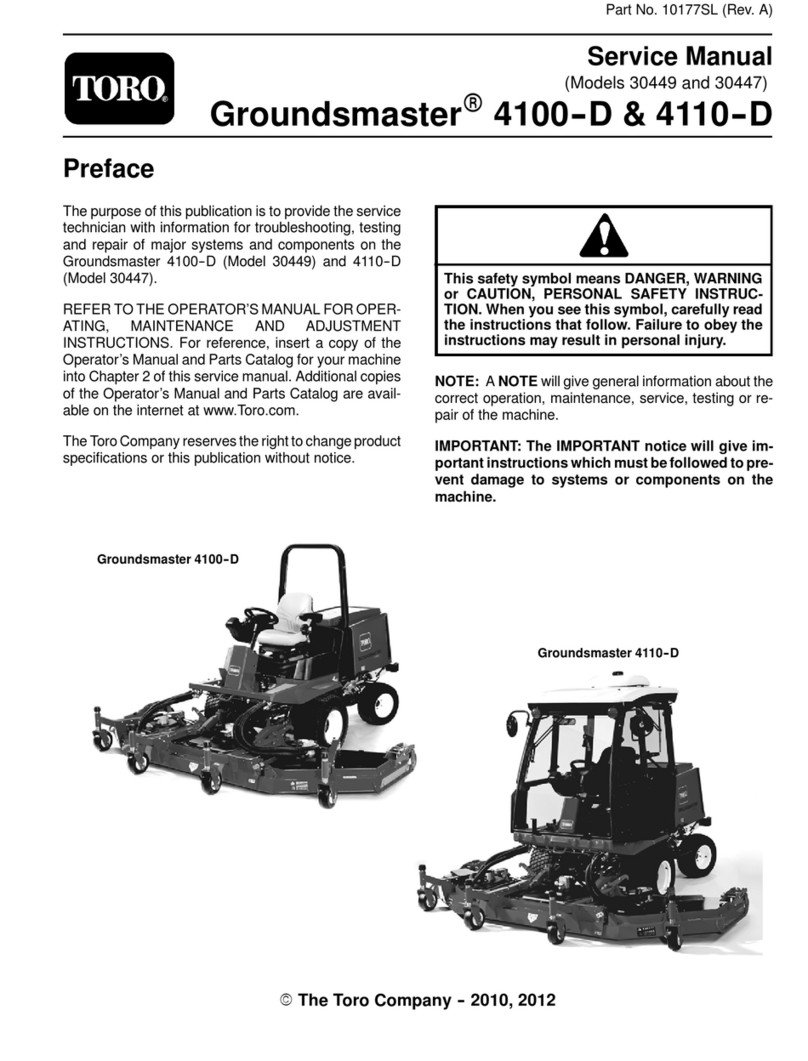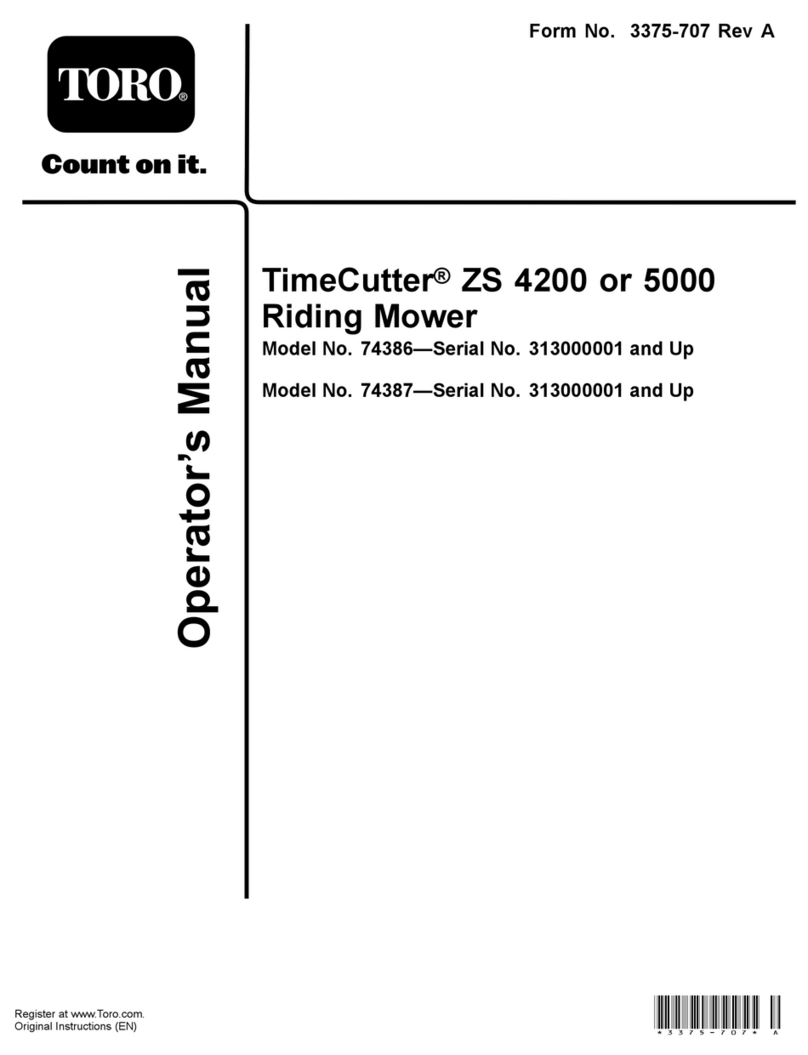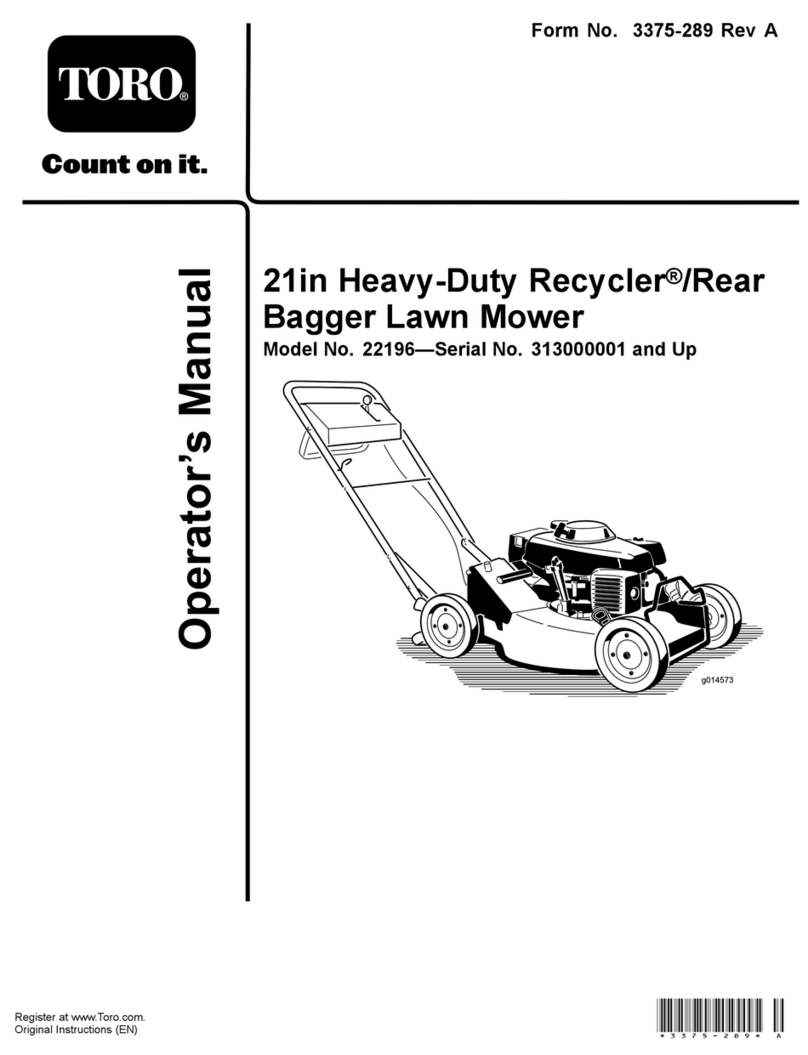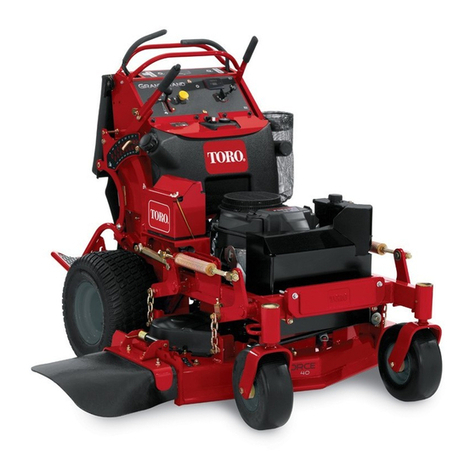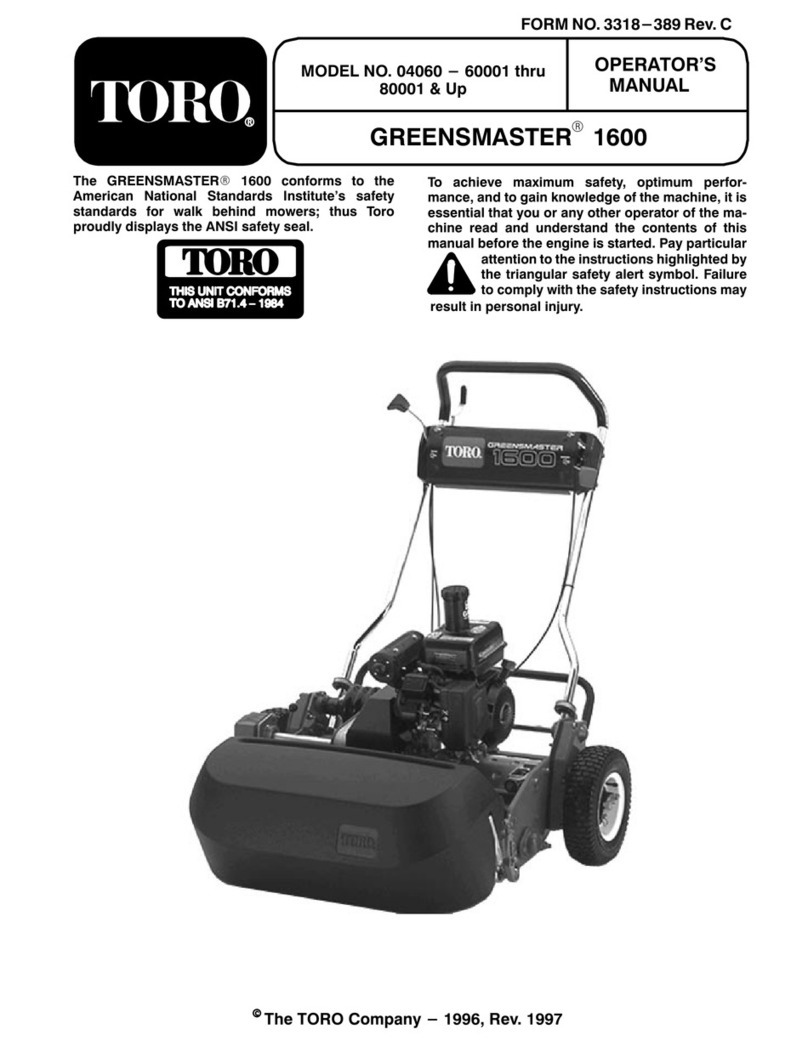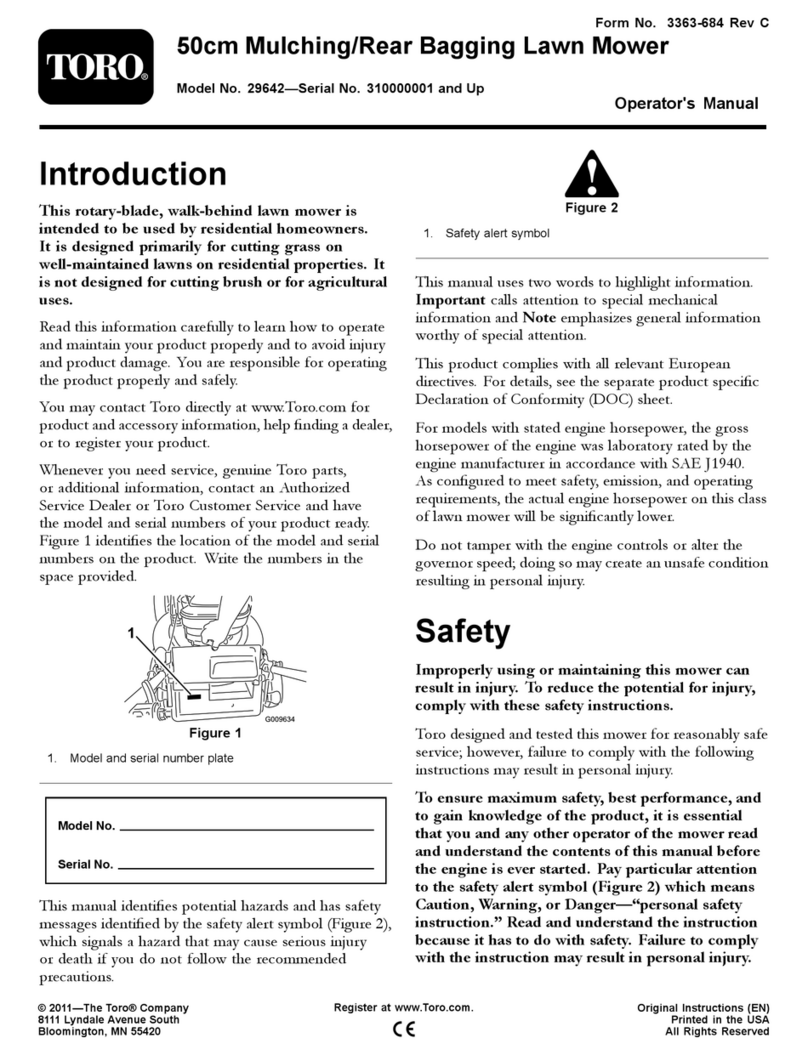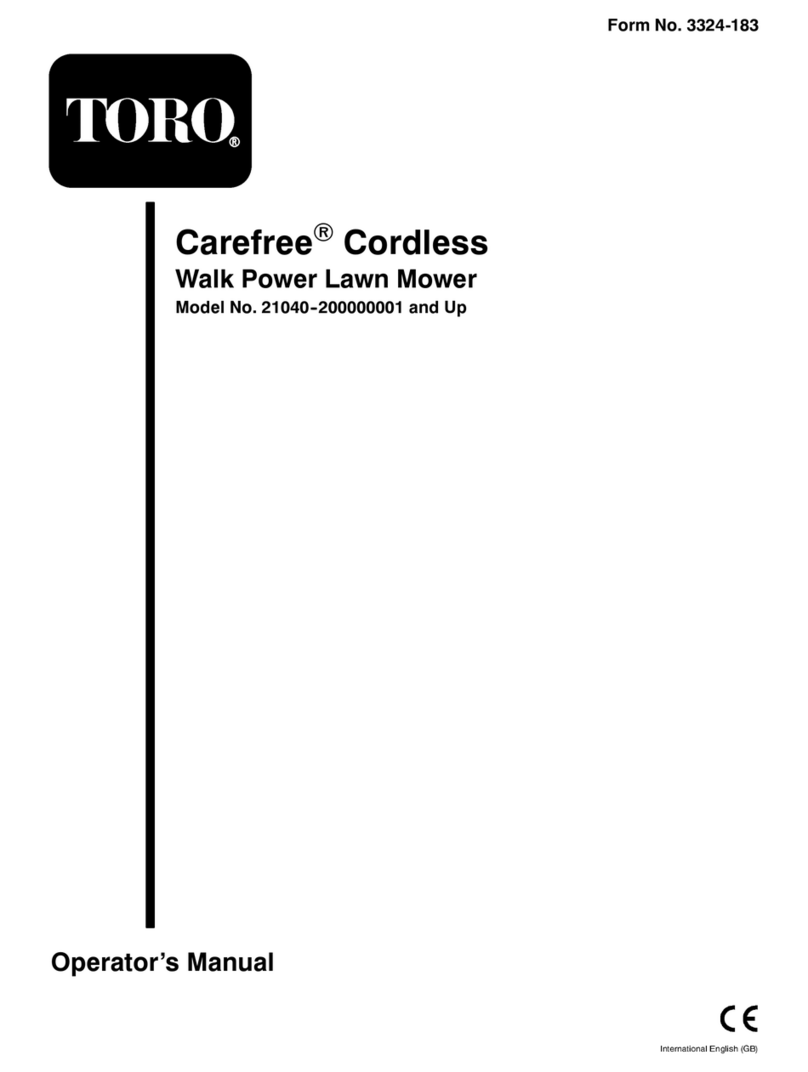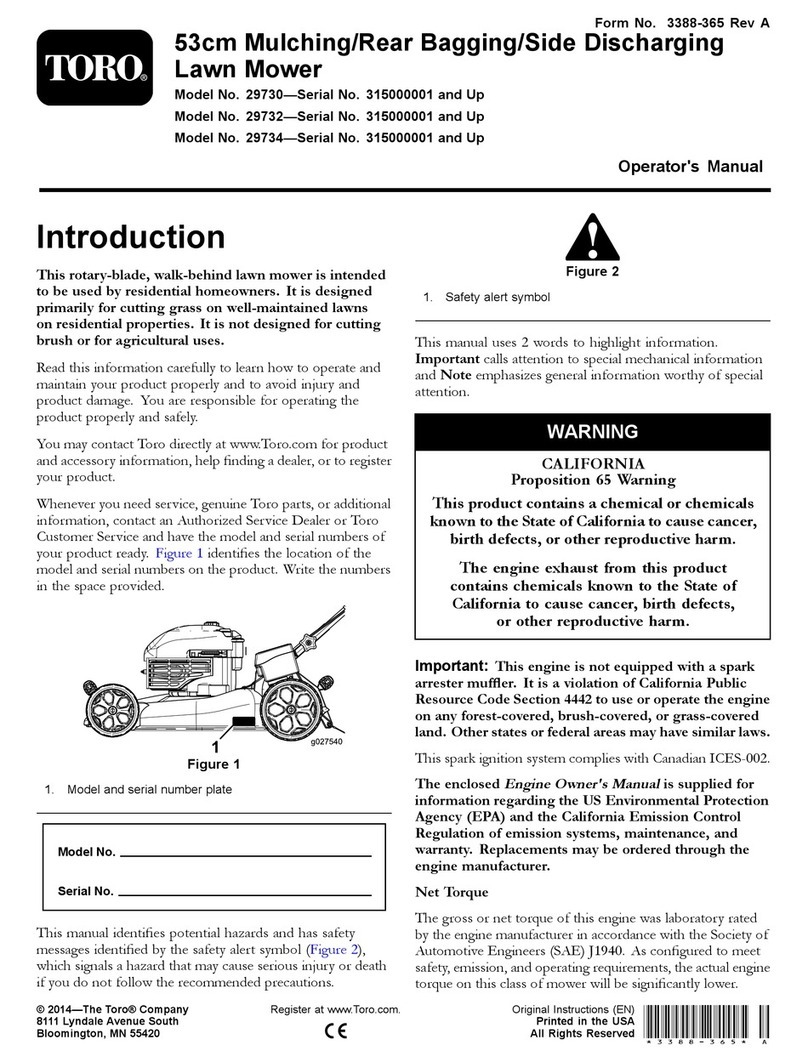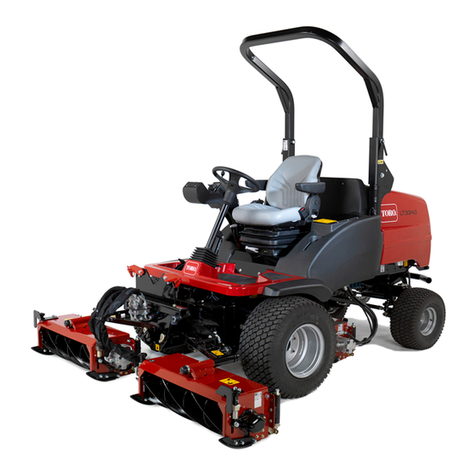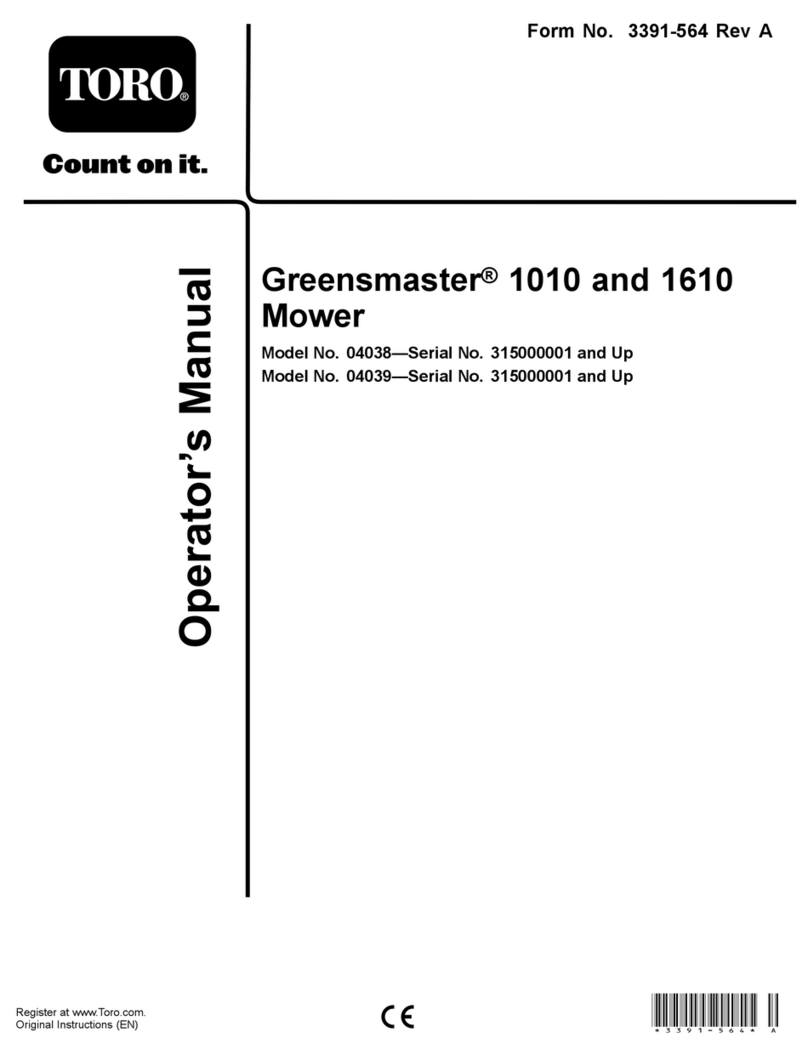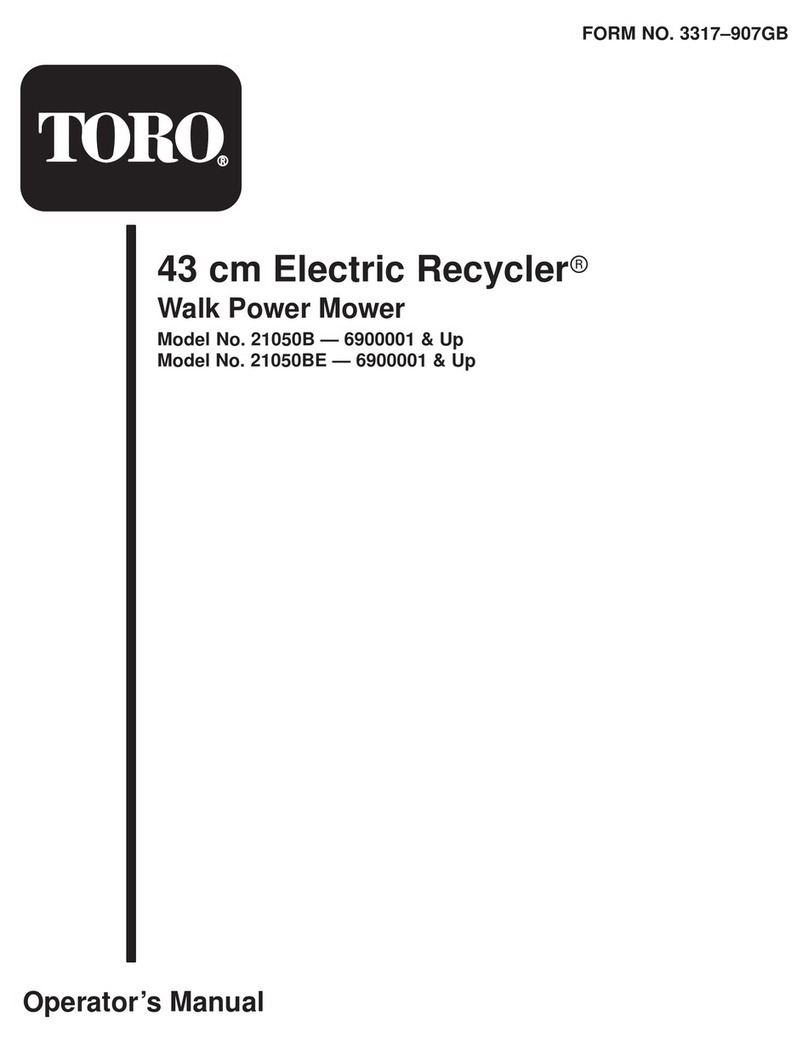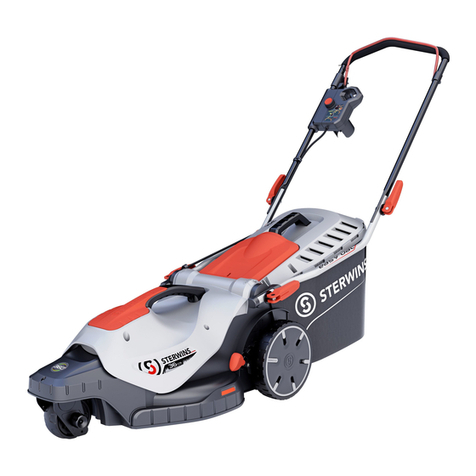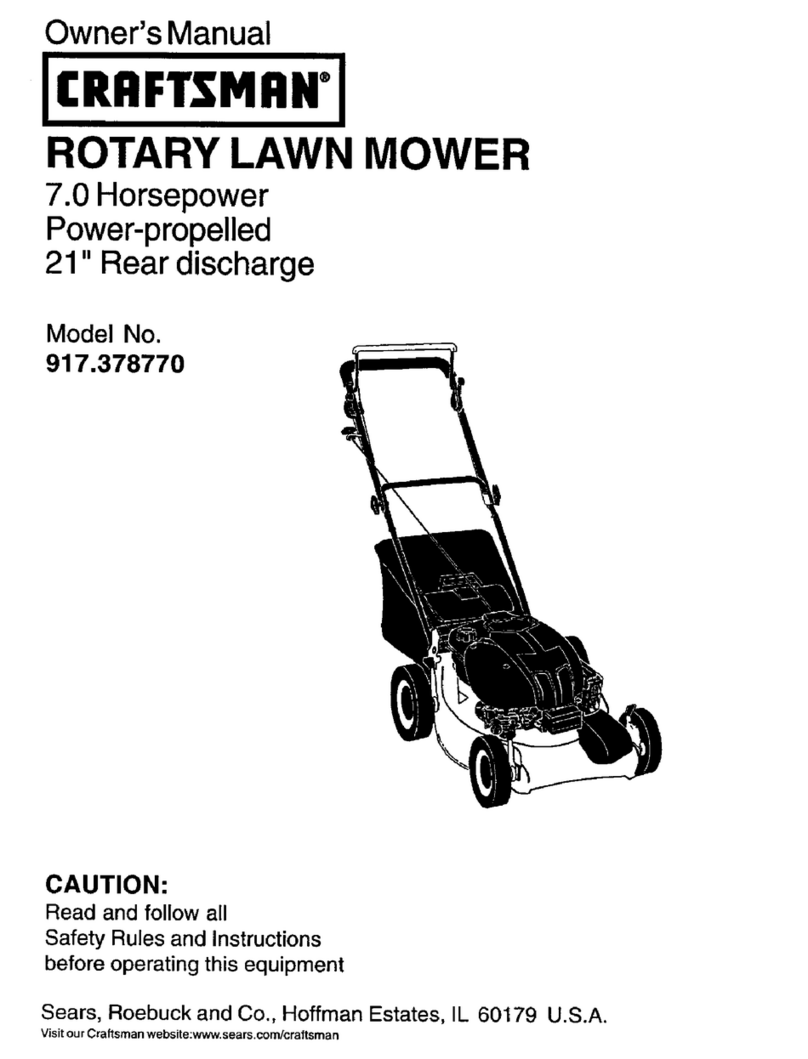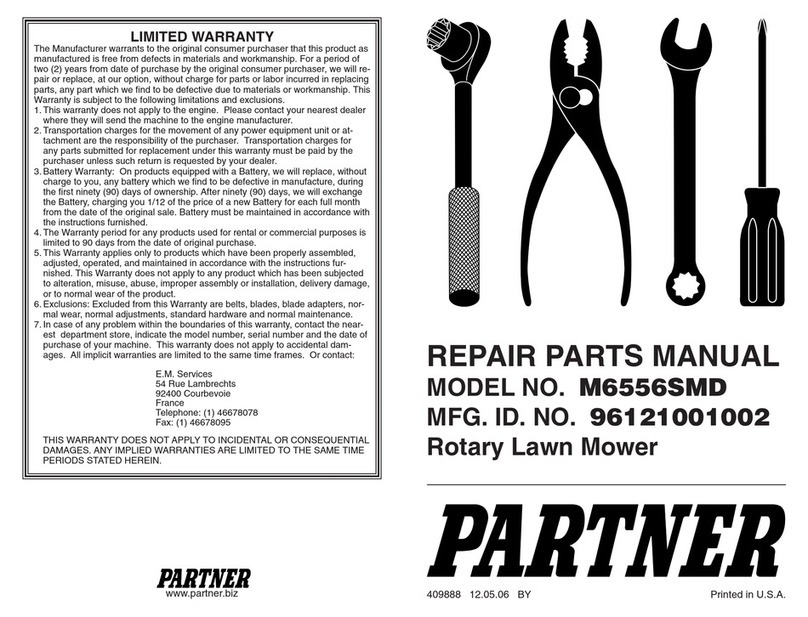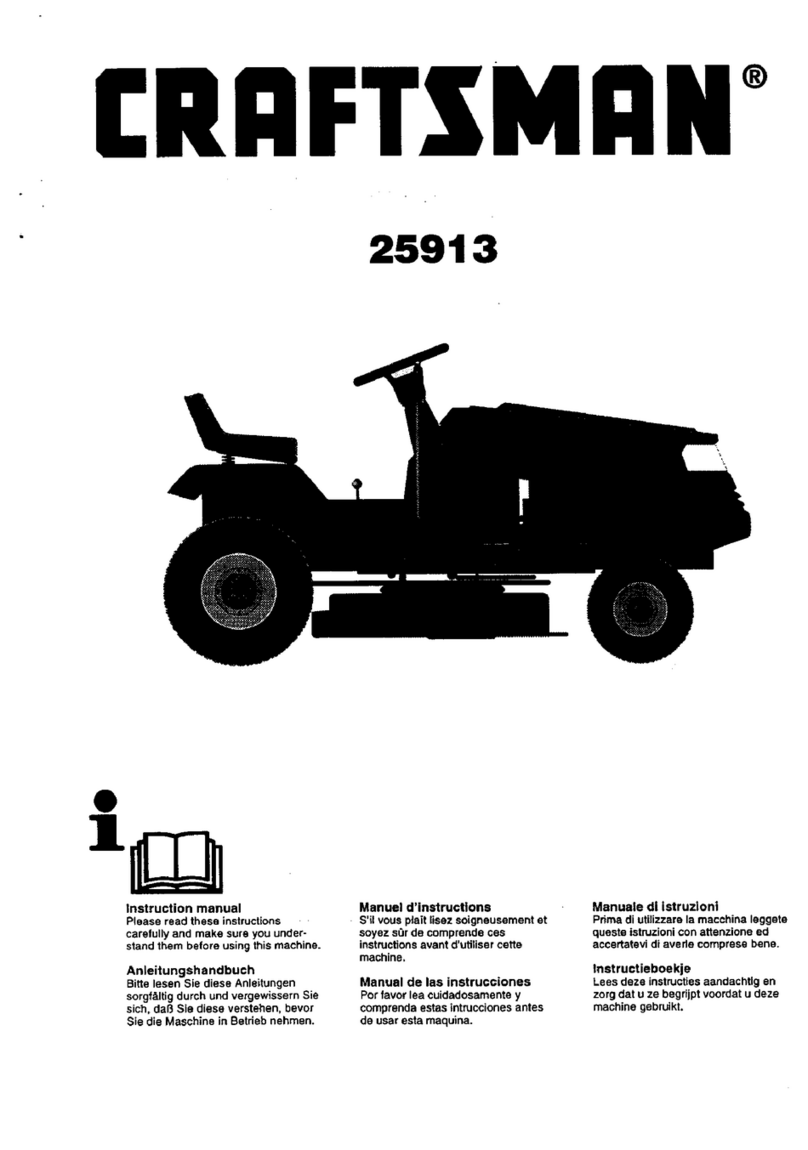
3
SAFETY INSTRUCTIONS
The safety alert symbol means
CAUTION, WARNING or DAN
GER personal safety
instruction". Read and under
stand the instruction because
it has to do with safety. Failure to comply with
the instruction may result in personal injury.
BEFORE OPERATING
1. Read and understand the contents of this
Operator's Manual before operating the machine.
Become familiar with all controls and know how to stop
quickly. A free replacement manual is available by
sending complete Model and Serial Number to:
The Toro Company
8111 Lyndale Avenue South
Bloomington, Minnesota 55420-1196
2. Never allow children to operate the machine. Do
not allow adults to operate the machine without proper
instructions. Only trained and authorized persons
should operate this vehicle. Anyone who operates the
vehicle should have a motor vehicle license.
3. Never operate the machine when under the
influence of drugs or alcohol.
4. Keep all shields and safety devices in place. If a
shield, safety device or decal is illegible or damaged,
repair or replace it before operation is commenced.
5. Tighten any loose nuts, bolts and screws to assure
machine is in safe operating condition. Make sure
Topdresser tongue mounting pins, hitch pins and
tongue jack are in place and secure.
6. Do not modify this equipment in any manner.
7. Do not operate machine while wearing sandals,
tennis shoes, sneakers or shorts. Also, do not wear
loose fitting clothing which could get caught in moving
parts. Always wear long pants and substantial shoes.
Wearing safety glasses, safety shoes and a helmet is
advisable and required by some local ordinances and
insurance regulations.
WHILE OPERATING
8. Do not run the engine in a confined area without
adequate ventilation. Exhaust fumes are hazardous
and could possibly be deadly.
9. NEVER carry passengers on the Top Dresser and
keep everyone away from the areas of operation.
10. Keep hands and feet out of hopper when unit is
operating or engine is running on tow vehicle.
11. Operator and passenger should remain seated
whenever the tow vehicle is in motion.
12. Using the machine demands attention. Failure to
operate tow vehicle safely may result in an accident,
tipover of tow vehicle and serious injury or death. Drive
carefully. To prevent tipping or loss of control:
A. Use extreme caution, reduce speed and
maintain a safe distance around sand traps,
ditches, creeks, ramps, any unfamiliar areas or
other hazards.
B. Watch for holes or other hidden hazards.
C. Use caution when operating tow vehicle on a
steep slope. Normally travel straight up and down
slopes. Reduce speed when making sharp turns or
when turning on hillsides. Avoid turning on hillsides
whenever possible.
D. Use extra caution when operating tow vehicle on
wet surfaces, at higher speeds or with a full load.
Stopping time will increase with a full load. Shift into
a lower gear before starting up or down a hill
E. Avoid sudden stops and starts. Do not go from
reverse to forward or forward to reverse without
coming to a complete stop.
F. Do not attempt sharp turns or abrupt maneuvers
or other unsafe driving actions that may cause a
loss of control.
G. Before backing up, look to the rear and assure
no one is behind. Back up slowly.
H. Watch out for traffic when near or crossing
roads. Always yield the right of way to pedestrians
and other vehicles. This machine is not designed
for use on streets or highways. Always signal
your turns or stop early enough so other persons
know what you plan to do. Obey all traffic rules and
check for local regulations on the operation of the
topdresser on or near highways.
I. Always watch out for and avoid low over-hangs
such as tree limbs, door jambs, over-head
walkways, etc. Make sure there is enough room
over head to easily clear the tow vehicle and your
head.
J. If ever unsure about safe operation, STOP
WORK and ask your supervisor.
13. When loading with sand, distribute load evenly.
Operate tow vehicle with extra caution when the hopper
is full of sand. Keep load balanced to prevent it from
shifting.
MAINTENANCE
14. Before servicing or making adjustments to the
topdresser, stop engine of tow vehicle, set parking
brake and remove key from engine to prevent
accidental starting of the engine.
15. Perform only those maintenance instructions
described in this manual. If major repairs are ever
needed or assistance is desired, contact an Authorized
TORO Distributor.
